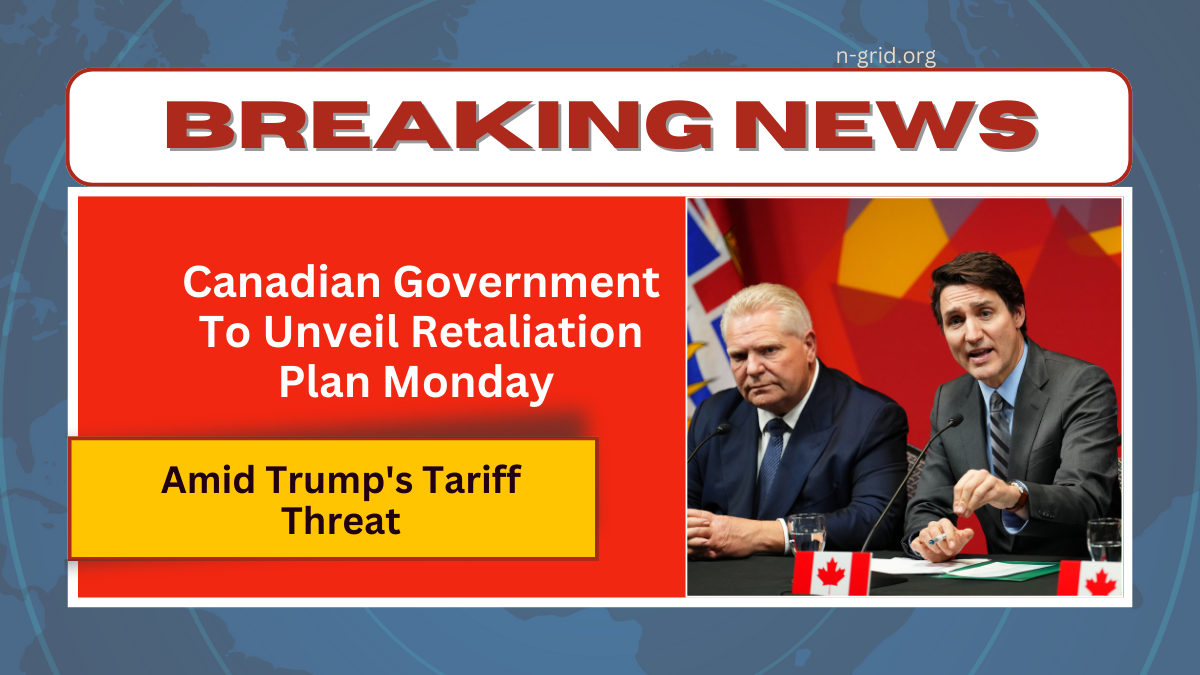In light of U.S. President-elect Donald Trump’s declaration to impose a 25% tariff on all Canadian imports upon taking office, Canada is poised to unveil its initial retaliation plan.
The federal government, led by Prime Minister Justin Trudeau, has been actively strategizing with provincial and territorial leaders to address this imminent trade challenge.
Canadian Government’s Preparedness
The Canadian administration is set to announce proposed retaliatory tariffs on select American goods as early as Monday, contingent upon Trump’s enactment of the threatened tariffs on his inauguration day.
This proactive stance underscores Canada’s commitment to safeguarding its economic interests and responding promptly to U.S. trade actions.
Strategic Discussions with Provincial Leaders
Prime Minister Trudeau convened a comprehensive meeting with Canada’s provincial and territorial leaders to formulate a cohesive response to the anticipated U.S. trade measures.
The discussions yielded a largely unified approach, considering options such as imposing counter-tariffs on U.S. products, restricting key energy exports, and devising mechanisms to support sectors adversely affected by potential trade disruptions.
Targeted U.S. Goods for Counter-Tariffs
Canadian officials have been meticulously identifying American products that could be subjected to retaliatory tariffs. The list under consideration includes U.S. steel products, ceramics like toilets and sinks, glassware, and Florida orange juice.
Notably, there was significant support for targeting politically sensitive items, such as Kentucky bourbon, to maximize the impact of Canada’s countermeasures.
Commitment to Border Security Enhancements
Despite the looming tariff threats, Canadian federal officials have yet to receive confirmation that their proposed $1.3 billion investment in border security will suffice to prevent the imposition of U.S. tariffs.
This investment aims to address concerns related to the flow of illegal drugs and migrants across the Canada-U.S. border, which the incoming U.S. administration has cited as justification for the proposed tariffs.
| Proposed Canadian Counter-Tariffs | U.S. Products Targeted | Economic Impact | Political Significance | Potential U.S. Response |
|---|---|---|---|---|
| Retaliatory Tariffs | Steel Products | High | Significant in industrial states | Escalation of trade tensions |
| Retaliatory Tariffs | Ceramics (e.g., toilets, sinks) | Moderate | Impact on manufacturing sectors | Negotiation pressures |
| Retaliatory Tariffs | Glassware | Moderate | Affects consumer goods industry | Potential for compromise |
| Retaliatory Tariffs | Florida Orange Juice | High | Targets key agricultural export | Lobbying by U.S. producers |
In conclusion, Canada’s readiness to implement retaliatory measures reflects a strategic and measured approach to preserving national economic interests in the face of potential U.S. trade sanctions.
The government’s collaboration with provincial leaders and targeted counter-tariff plans demonstrate a commitment to a unified and effective response.
FAQs
1. What prompted Canada’s decision to prepare retaliatory tariffs?
The Canadian government is responding to U.S. President-elect Donald Trump’s announcement of a 25% tariff on all Canadian imports, slated to take effect on his inauguration day.
2. Which American products are likely to face Canadian counter-tariffs?
Canada is considering imposing tariffs on U.S. steel products, ceramics (including toilets and sinks), glassware, and Florida orange juice. Additionally, politically sensitive items like Kentucky bourbon are under consideration to maximize the impact of the countermeasures.
3. How has the Canadian government coordinated its response to the U.S. tariff threat?
Prime Minister Justin Trudeau held a meeting with provincial and territorial leaders to develop a unified strategy.




